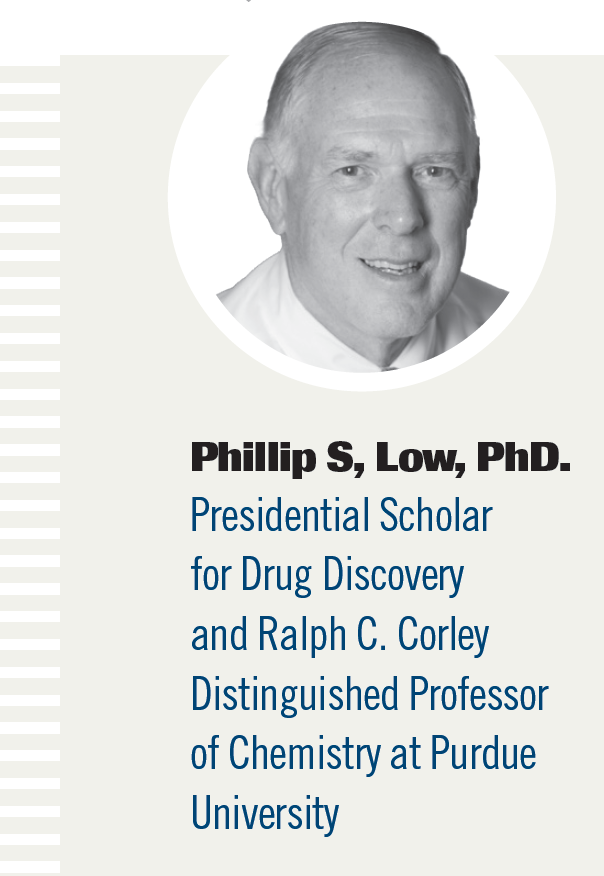FDA Approves Imaging Agent Designed to Target Tumors in Lung Cancer
“Upon activating a fluorescent lamp, the cancer tissue glows very brightly, like stars against a black sky, and enables us to see exactly where the tumor tissue was.”

Pafolacianine (Cytalux) was recently approved by the FDA as an imaging agent for patients with lung cancer.1 The success of pafolacianine, a fluorescent imaging agent, derives from its ability to illuminate cancer cells during surgery. Previously, in November 2021, it had been approved to help detect ovarian cancer during surgery.2 The new approval is based on the phase 3 ELUCIDATE trial (NCT04241315), which demonstrated favorable efficacy and safety in patients undergoing thoracic surgery.3
In an interview with ONCOLOGY®, the scientist who pioneered this treatment, Philip S. Low, PhD, discussed the drug’s development. Low also talked about the use of the agent in lung cancer, how it differs from its use in ovarian cancer, and whether usage might expand to other tumor types.
Q: Can you speak about the development of pafolacianine?
LOW: Pafolacianine was developed in my laboratory at Purdue University as a tumor-targeted fluorescent dye. We tested it in animals to demonstrate that, upon injection in the tail vein of mice, for example, it would home in on malignant lesions and avoid uptake in healthy tissues. This would allow, upon activating a fluorescent lamp, the cancer tissue to glow very brightly, like stars against a black sky, and enable us to see exactly where the tumor tissue was. In mock surgeries with animals, we tested if we could locate and remove all the different metastatic lesions. If we resected a tumor or nodule out of healthy tissue, if we removed all cancer cells, and if there were residual cancer cells left, we would see fluorescence in the tumor bed. It also would tell us where to dig to find buried malignant nodules, and thereby help us avoid probing healthy tissues in places where no cancer existed. It provided multiple benefits in these mock surgeries in animals.
After demonstrating its efficacy in these animal models, it was introduced first into humans for assistance with ovarian cancer surgeries. Ovarian cancer surgeons, located at multiple sites around the world, conducted these clinical trials and demonstrated the utility of injecting the patient with this tumor-targeted fluorescent dye. It behaved very similarly to what I just described for the animal studies. After its approval for ovarian cancer, the FDA still required that we demonstrate its value in other cancers. In terms of surgery, we introduced it [in] patients with non–small cell lung cancer. [The FDA also] approved [pafolacianine] for this indication, and the data are very promising. For both ovarian and lung cancer, this suggests that it can, in fact, reveal the location and help the surgeon remove a lot more cancer than otherwise would have been possible.
Q: Is pafolacianine used in similar ways in ovarian and lung cancer?
LOW: They will essentially be used in the same way, but I think the benefit may shift between the 2 cancers. Ovarian cancer often metastasizes and has little nodules throughout the peritoneal cavity. It’s not uncommon for a surgeon, upon opening a patient with ovarian cancer, to find 5 to 10, often even 20 or 30, small nodules spread [throughout] the viscera, omentum, and different structures in the peritoneal cavity. In this application, the major value is finding all these different metastatic lesions and ensuring you remove all of them.
In the case of lung cancer, it’s not spread and has many little spots all over the thoracic cavity, but instead is often in 1 or 2, or 3 lumps. These are often buried deep. In this application, the major value is finding these buried lumps deep in the lungs and knowing where to dig. If you don’t know where to dig, you’re going to cut a lot of healthy tissue out and create a lot of damage in the lung. If you know exactly where it is, you can go straight for it and cut it out. That’s one advantage.
Another advantage is when that lump is removed, [surgeons need to ask]: “has all of the cancer been removed? Is there any fluorescent tissue remaining in that tumor bed?” This has turned out to be useful.
The third advantage is finding lesions. If you find the first lump, are there others in the same lung, the opposite lung, or a different lobe of the lung? Finding these metastatic lesions—the synchronous lesions— has proven to be very useful.
Q: How can clinicians implement this in their practice?
LOW: Clinicians need to purchase the tumor-targeted fluorescent dye and a fluorescent camera that can detect the fluorescence emitted by the tumor. There are several different companies that manufacture [these kinds of] cameras. Very soon, there will be many cameras usable in combination with pafolacianine to find tumor tissue in patients with cancer.
Q: Are there any other trials currently underway to assess this agent?
LOW: There are 2 types of clinical trials. There are clinical trials initiated by a commercial entity that wishes to obtain approval from the FDA to use a drug in a particular cancer indication. [Then] there are trials initiated by investigators—[usually] surgeons working at medical schools around the country who’d like to explore the potential usefulness of pafolacianine in, let’s say, kidney cancer, liver cancer, brain cancer, esophageal cancer, and so on. It turns out that there are several such investigator-sponsored trials currently underway. They’re revealing a lot to us regarding the usefulness of pafolacianine for additional applications.
References
- On Target Laboratories announces expanded indication of Cytalux (pafolacianine) injection for detection of lung cancer during surgery. News release. On Target Laboratories. December 16, 2022. Accessed December 19, 2022. bit.ly/3HIHo49
- FDA approves new imaging drug to help identify ovarian cancer lesions. News release. FDA. November 29, 2021. Accessed December 19, 2022. bit.ly/3VauZZJ
- Singhal S, et al. Randomized, multi-center phase 3 trial of the pafolacianine during intraoperative molecular imaging of cancer in the lung: results of the ELUCIDATE trial. Presented at: 102nd American Association for Thoracic Surgery Annual Meeting; May 17, 2022; Boston, MA. Abstract LB9.
Newsletter
Stay up to date on recent advances in the multidisciplinary approach to cancer.
